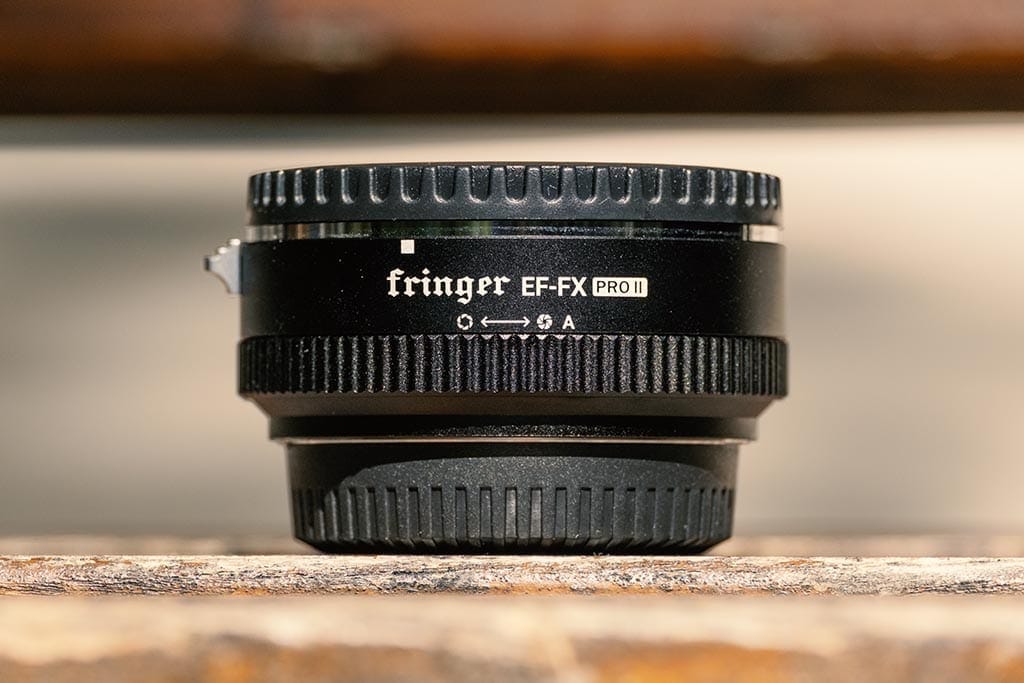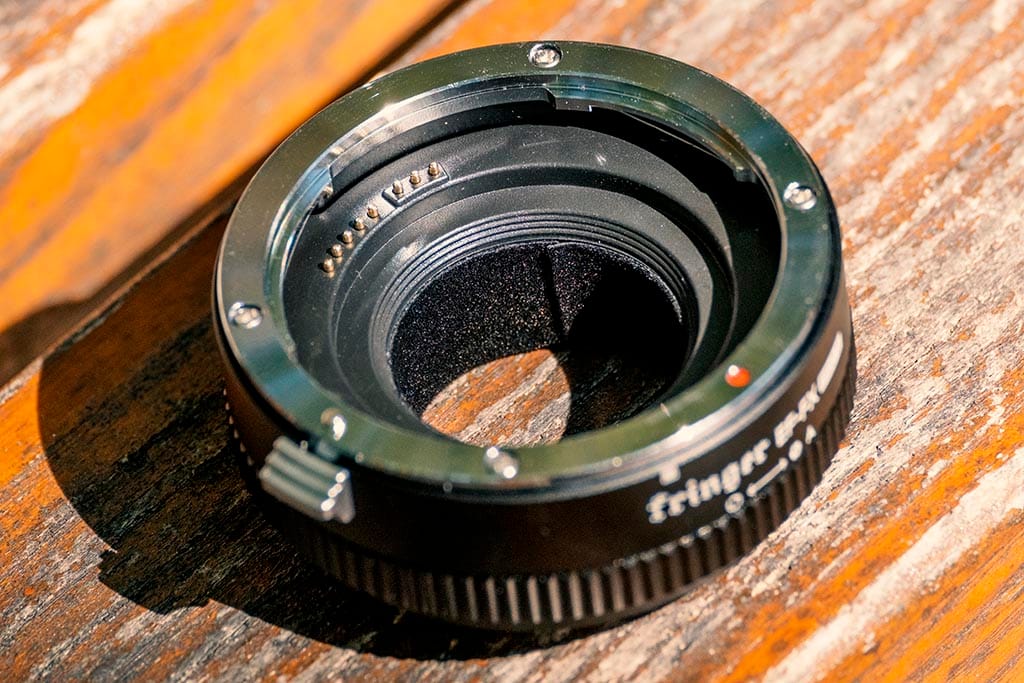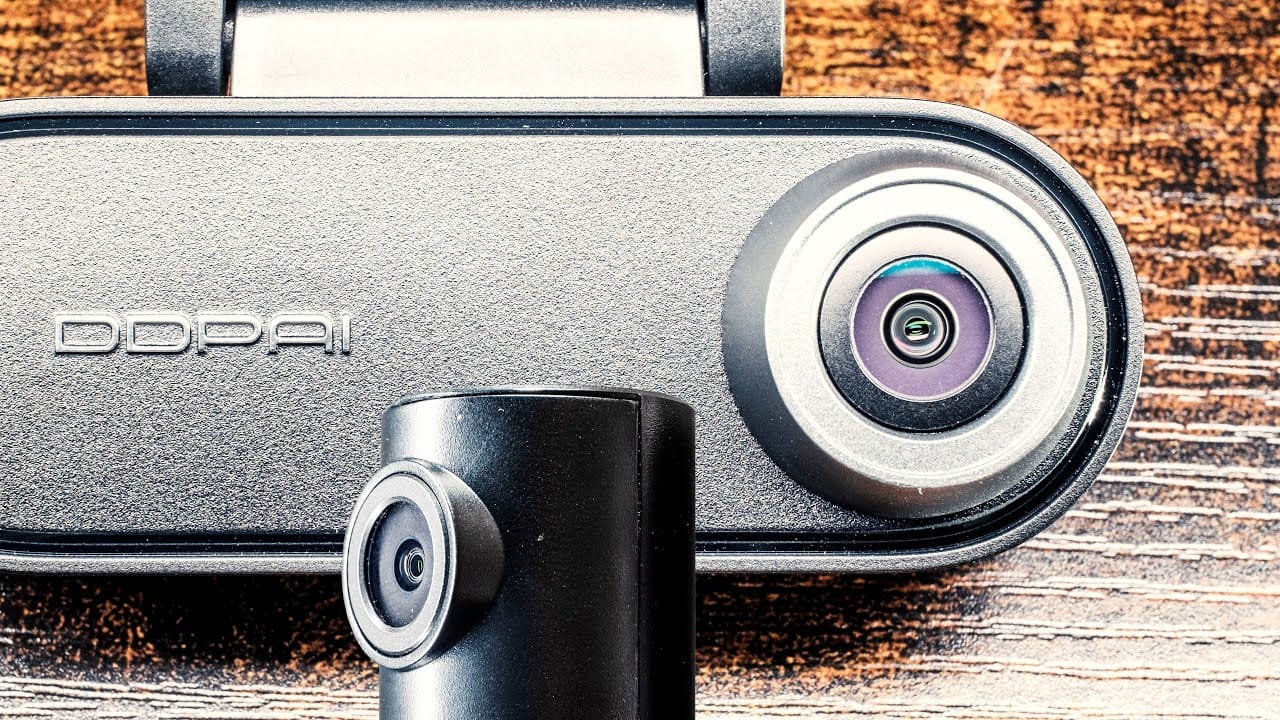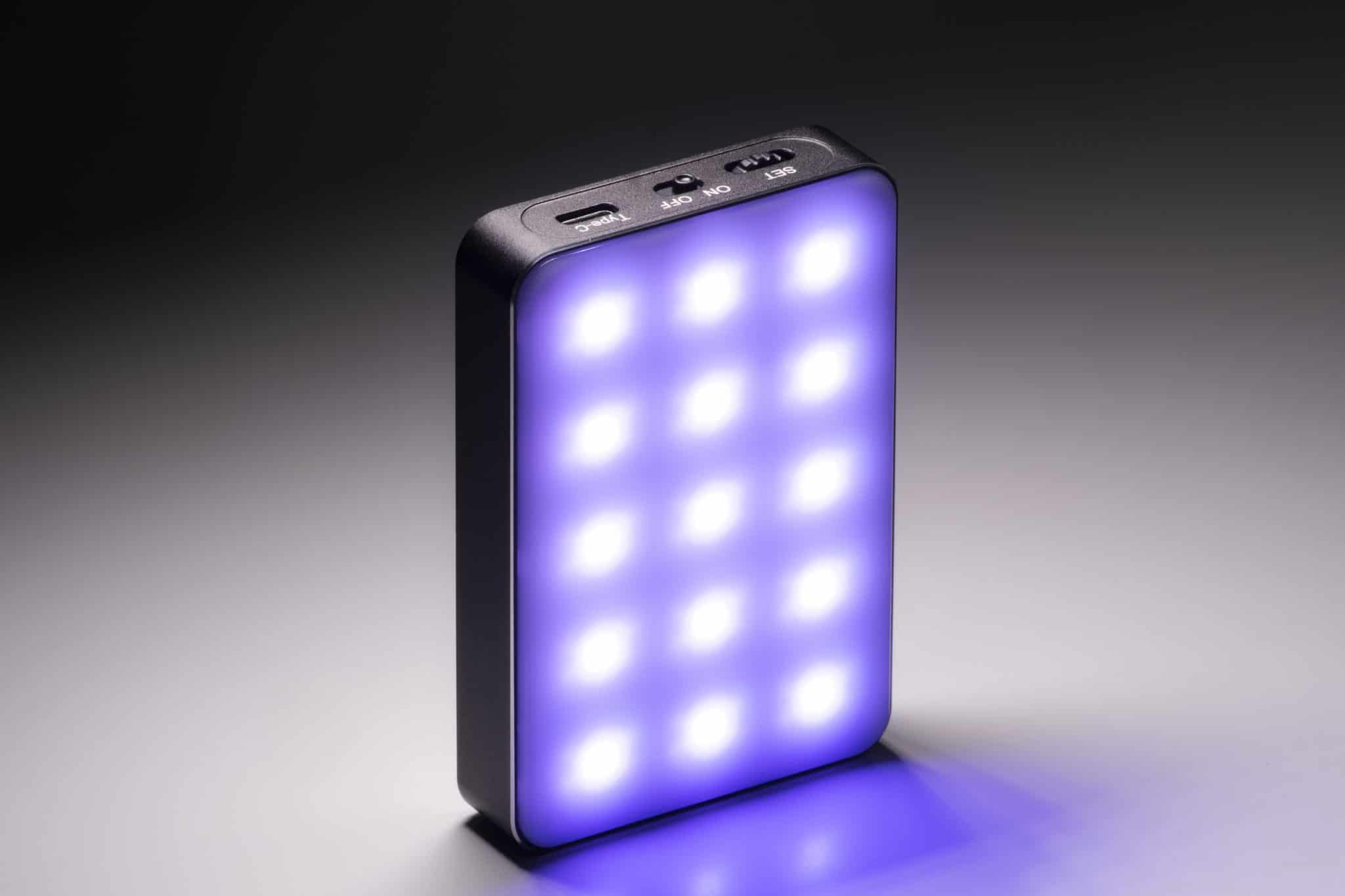The Fringer EF-FX Pro II is an electronic lens adapter that allows Canon EF and EF-S lenses to be mounted on to Fujifilm X-cameras.
Because of the electronic transmission, auto focus, image stabilization and aperture are supported and are correctly being displayed on the camera’s screen. Keep in mind that the camera’s crop doesn’t change. The adapter is not a focal reducer so full-frame lenses won’t be used to their full potential.

Auto focus is a tricky topic especially when it comes to shooting video. In general the auto focus works well when taking pictures but when it comes to continuous AF, it often struggles or doesn’t react at all. But keep in mind that the auto focus performance hugely depends on the lens and the adapter cannot improve already bad AF. When it comes to recording video I wouldn’t use the continuous auto focus because it’s not reliable, even on the X-T4. For photography it’s quite the opposite. I only had a few hiccups but mostly got sharp results.

One of the biggest advantages of the Fringer adapter is the support of optical image stabilization and IBIS on the X-H1 and X-T4. This is a big deal because you can simply attach the lens and the adapter recognizes the focal length. No need to manually set the focal length in the IBIS menu setting to make sure it works. It’s all electronically transmitted. This comes in handy because I like using fast primes for hand-held video shooting. If optical image stabilization is activated on the lens, the camera’s IBIS will be switched off. Lenses without OIS can use IBIS if it is turned on in the camera’s menu. Although the IBIS works well, there can be issues when using tele-photo lenses above 100mm.
The adapter has an electronic aperture ring just like most native Fuji X-lenses. The ring turns easily without much friction but is not clickless. I personally enjoy using this ring to change the aperture because it feels very familiar to using Fuji lenses. The aperture is always being displayed on the camera’s screen so you don’t have to worry about which aperture is actually set. When turning the ring further than the smallest aperture it switches to auto aperture.

When it comes to image quality I was actually surprised how sharp the images and especially the videos look. I have mostly tested older EF-S lenses that are not as sharp as Canon L lenses, but even those delivered some great results. Even Canon’s nifty fifty which is their cheapest prime lens ended up producing some lovely looking images. Vignetting is more noticeable on some lenses than others but overall not too bad. Especially when comparing the image quality to native X-mount lenses, the EF lenses are just as sharp which I personally didn’t expect.
When it comes to the built quality the EF-FX Pro II feels a bit plasticky. But maybe that’s because it’s rather lightweight compared to other adapters. Inside the adapter is a USB-port to update its firmware. The adapter sits rather tight on the camera body. There is no movement when grabbing the lens or the adapter. It’s rock solid.
Overall I am impressed by the adapter’s performance. Like I mentioned before, auto focus is a tricky topic and it’s hard to rate due to the different performance each lens delivers. Since I focus manually when shooting video this is not a big deal but if you need great auto focus you should make sure your EF lenses are supported by the adapter.
It’s nice to be able to use older EF-S lenses that are specifically designed for APS-C cameras like the Canon 7D but I think it would be great to see Fringer making a focal reducer to get the full potential out of full-frame lenses.
You can check the current price and purchase the Fringer EF-FX Pro II by using our affiliate link, which doesn’t add any extra costs for you and supports our blog!
Written by filmmaker Moritz Janisch on August 24, 2020


